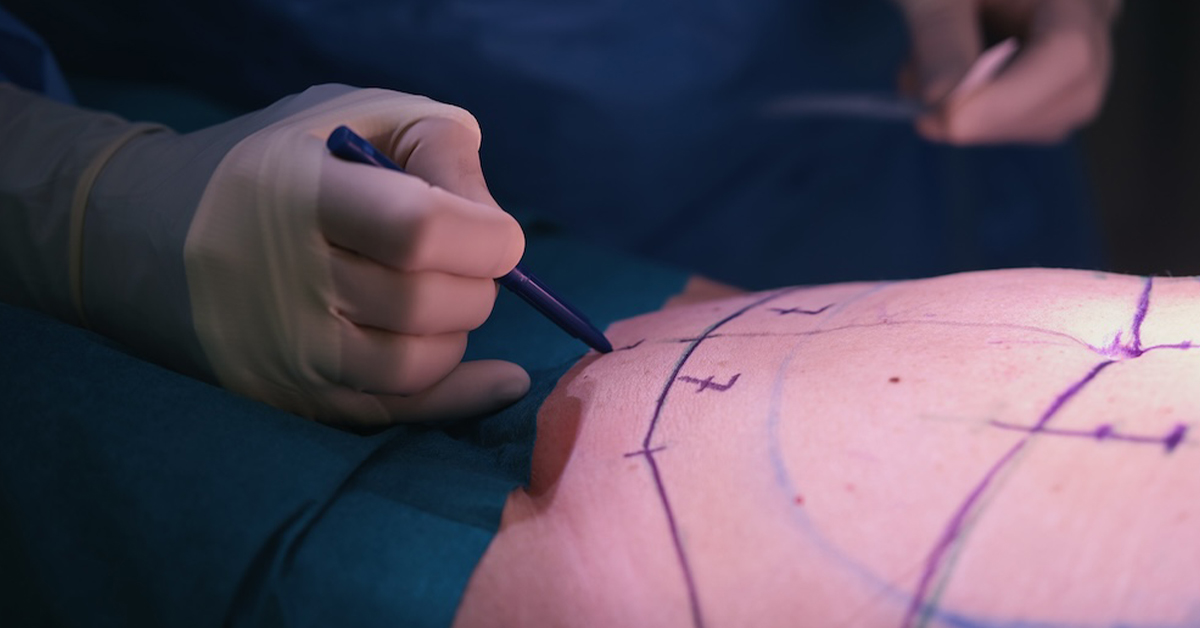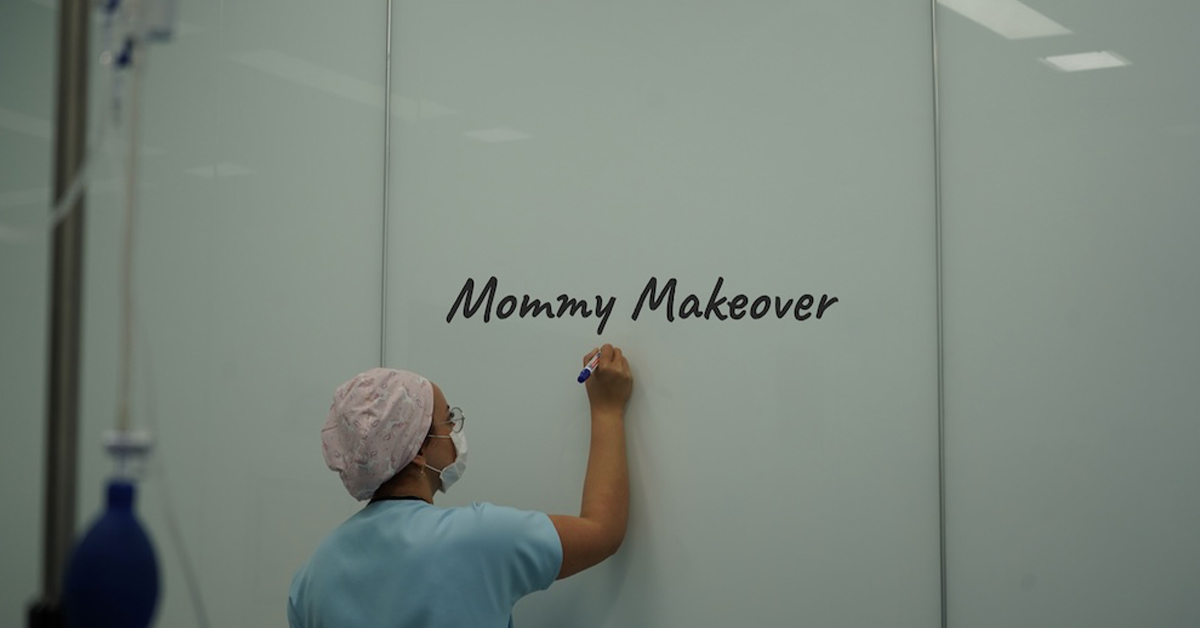Dead Belly Button After Tummy Tuck: What To Know
A Tummy tuck, or abdominoplasty, is a cosmetic and functional procedure performed to remove excess skin and fat from the lower abdomen. However, in rare cases, complications can occur, one of which is a dead belly button or umbilical necrosis. This occurs when the tissue in the belly button dies due to diminished blood supply. The deep blood supply to the belly button can be reduced by other surgical procedures or the presence of a hernia. Fortunately, the risk can be determined during surgery, and steps can be taken to salvage the belly button if necrosis occurs.
- Dead belly button, or umbilical necrosis, is a rare complication that can occur after a Tummy tuck surgery.
- Diminished blood supply to the belly button is the main cause of necrosis, and it can be affected by other surgical procedures and the presence of a hernia.
- Recognizing the signs of healing and seeking prompt medical attention is crucial in managing a dead belly button.
- Proper post-operative care, including wound care and infection prevention, can help prevent complications and promote healing.
- Belly button reconstruction and revision surgeries are available to address any aesthetic concerns that may arise.
Causes and Risk Factors of Dead Belly Button After Tummy Tuck
During a tummy tuck procedure, the blood supply to the belly button can be compromised, leading to the death of tissue in the umbilicus. This condition, known as dead belly button or belly button necrosis, is a rare but serious complication of abdominoplasty. Several factors can increase the risk of developing this condition.
Risk Factors
- Prior Surgical Procedures: If the belly button has been used as an access port in previous surgeries, the blood supply to the area may already be compromised, increasing the risk of necrosis.
- Hernia Repair: Repairing a hernia during a tummy tuck can further compromise the blood supply to the belly button, increasing the risk of tissue death.
- Scarring: Scarring from past keyhole surgeries can also contribute to diminished blood supply to the umbilicus, increasing the risk of necrosis.
It is important to note that these risk factors do not guarantee the development of dead belly button after a tummy tuck. However, identifying and assessing these factors can help surgeons take proactive measures during the procedure to minimize the risk.
In some cases, surgeons may choose not to repair a hernia during a tummy tuck to reduce the chances of belly button necrosis. By carefully evaluating the individual patient’s risk profile, surgeons can make informed decisions to mitigate potential complications.
| Risk Factors | Description |
|---|---|
| Prior Surgical Procedures | Previous use of the belly button as an access port in other surgeries. |
| Hernia Repair | Performing hernia repair during tummy tuck surgery. |
| Scarring | Presence of scarring from past keyhole surgeries. |
Recognizing and Managing Dead Belly Button After Tummy Tuck
After undergoing a tummy tuck surgery, it is important to closely monitor the healing process of your belly button. During the initial phase, it is common to experience swelling and redness around the belly button area. However, it is crucial to be aware of any abnormal signs that may indicate tissue death, such as blackening or darkening of the belly button. If you notice these signs, it is important to seek immediate medical attention to address the issue.
During the healing process, it is normal to experience some discomfort and swelling. However, as time progresses, these symptoms should gradually decrease. If you are experiencing prolonged or excessive swelling, it is recommended to consult with your surgeon to ensure proper healing. Additionally, it is important to follow all post-operative care instructions provided by your surgeon, including proper wound care and medication usage, to minimize the risk of complications.
Should necrosis occur, treatment options will depend on the severity of the condition. In some cases, if the belly button shows signs of recovery, it may be salvaged through careful monitoring and dressing of the wound until it heals from the deeper layers of the skin. However, in more severe cases, a revision surgery may be necessary to address the necrosis and restore the appearance of the belly button. Your surgeon will guide you through the appropriate treatment options based on your specific situation.
Post-operative Care and Prevention of Dead Belly Button
After undergoing a tummy tuck, proper post-operative care is crucial for preventing complications, including the occurrence of a dead belly button. By following some essential steps and guidelines, you can help promote healing and reduce the risk of infection and other complications. Here are some important post-operative care measures:
- Keep the surgical site clean: It is important to keep the incision area clean and dry to minimize the risk of infection. Follow your surgeon’s instructions on how to clean the area and when to change dressings.
- Take prescribed medications: Your surgeon may prescribe medications, such as antibiotics or pain relievers, to help manage pain and prevent infection. Take these medications as directed and notify your doctor if you experience any adverse reactions.
- Attend follow-up appointments: Regular follow-up appointments with your surgeon are essential for monitoring your healing progress. These appointments allow your surgeon to evaluate the condition of your belly button and overall recovery.
In addition to these measures, proper wound care is necessary to protect the surgical site and prevent complications. Here are some tips for proper wound care post-abdominoplasty:
- Follow your surgeon’s dressing instructions: Your surgeon will provide specific instructions on how to care for your wound. This may include changing dressings, applying ointments, or wearing compression garments. It is important to follow these instructions carefully.
- Avoid exposing the wound to moisture: Moisture can increase the risk of infection. Keep the wound dry and avoid activities that may cause excessive sweating or contact with water.
- Protect the wound from trauma: Avoid activities that may put stress on the healing belly button, such as heavy lifting or strenuous exercise. Protect the area from accidental bumps or injuries.
Finally, to maintain the results of your tummy tuck and reduce the risk of complications, it is essential to maintain a healthy lifestyle. This includes a balanced diet, regular exercise, and weight management. Avoid smoking or consuming excessive alcohol, as these habits can interfere with the healing process. By following these post-operative care measures and maintaining a healthy lifestyle, you can help optimize your recovery and minimize the chances of experiencing a dead belly button after a tummy tuck.
Risks and Benefits of Tummy Tuck Surgery
Like any surgical procedure, tummy tuck surgery carries risks. It’s important to be aware of these potential complications before making the decision to undergo the procedure. Some of the risks associated with tummy tuck surgery include bleeding, infection, wound separation, tissue death, and even pulmonary embolism. These risks, however, are rare and can be minimized by selecting a qualified and experienced plastic surgeon who follows proper surgical protocols and guidelines.
Despite the risks, tummy tuck surgery offers a range of benefits that can improve both physical appearance and self-confidence. A successful tummy tuck can result in a flatter and firmer abdomen, making it easier to achieve a desired body contour.
This can have a positive impact on one’s overall appearance and self-esteem. Additionally, advancements in cosmetic surgery techniques and technology have led to improved outcomes and reduced risks in abdominoplasty procedures.
Choosing a skilled and reputable plastic surgeon is crucial to minimize the potential for malpractice and ensure a safe and successful tummy tuck surgery.
It’s important to have realistic expectations and thoroughly discuss the risks and benefits of the procedure with your plastic surgeon. Understanding the potential risks and benefits will help you make an informed decision and determine if a tummy tuck is the right choice for you.
| Risks | Benefits |
|---|---|
|
|
Recovery and Healing Stages After Tummy Tuck
After undergoing a tummy tuck surgery, it is important to understand the recovery and healing stages to ensure a smooth and successful outcome. The recovery timeline can vary from person to person, but generally, there are several key stages to be aware of.
1. Initial Healing Phase: This phase typically lasts for about a week, during which you may experience swelling and redness around the belly button. It is essential to follow your surgeon’s instructions regarding post-operative care, including keeping the surgical site clean and dry.
2. Inflammatory Stage: Following the initial healing phase, the inflammatory stage begins and typically lasts for two to three weeks. During this time, you may experience increased sensitivity and itching. It is important to avoid scratching or rubbing the surgical area to prevent further irritation.
3. Proliferative Stage: From four to six weeks after the surgery, the proliferative stage occurs. During this stage, new skin and blood vessels begin to form, and swelling and discomfort gradually decrease. It is crucial to manage pain during this time by following your surgeon’s prescribed pain management regimen.
4. Final Maturation Stage: The final maturation stage commences from two months up to a year after the surgery. During this period, the scar lightens and the tissues regain their strength. It is essential to take care of your scars by keeping them clean and moisturized, and following your surgeon’s recommendations for scar care.
By understanding these recovery and healing stages, you can have realistic expectations and take appropriate steps to promote a successful recovery after a tummy tuck surgery.
Cosmetic Considerations and Revision Options for Dead Belly Button
After experiencing dead belly button or umbilical necrosis following a tummy tuck, cosmetic considerations and revision options may come into play. Belly button reconstruction surgeries can be performed to recreate a natural and desirable appearance of your belly button. This procedure can be done either during the initial tummy tuck surgery or as a separate procedure, depending on your specific situation and preferences.
In some cases, revision surgeries may be necessary to correct any complications or imperfections that arise after the initial surgery. These revisions can address issues such as asymmetry, unnatural appearance, or scar tissue formation. Your plastic surgeon will assess your individual needs and work with you to develop a customized plan that aims to achieve the desired aesthetic results.
Maintaining the results of your tummy tuck surgery is vital for long-term satisfaction. Following a healthy lifestyle, including regular exercise and a balanced diet, can help maintain a flat abdomen and prevent weight gain that could potentially affect the outcome of the surgery. Additionally, proper wound care, as recommended by your surgeon, can aid in minimizing the risk of complications and promote optimal healing.
| Procedure | Description |
|---|---|
| Belly Button Reconstruction | A surgical procedure to recreate a natural and aesthetically pleasing appearance of the belly button. Can be performed during the initial tummy tuck surgery or as a separate procedure. |
| Revision Surgeries | Additional surgical procedures performed to address complications, imperfections, or unsatisfactory results that may occur after the initial tummy tuck surgery. |
| Maintaining Results | Following a healthy lifestyle, including regular exercise and a balanced diet, to maintain a flat abdomen and prevent weight gain that could potentially affect the outcome of the surgery. |
By working closely with your plastic surgeon and following their recommendations, you can increase the likelihood of achieving the desired aesthetic outcome and maintaining long-term results. Whether it’s through belly button reconstruction, revision surgeries, or maintaining a healthy lifestyle, there are options available to address any aesthetic concerns and support your overall satisfaction with the results of your tummy tuck surgery.
Conclusion
In conclusion, understanding the risks and proper care after a tummy tuck is crucial for a successful outcome. While dead belly button after the surgery is a rare complication, it is important to be aware of the signs of healing and seek medical attention if any complications arise.
Proper post-operative care, including wound care and infection prevention, plays a vital role in preventing complications and promoting healing. Following the recommendations of a qualified and experienced plastic surgeon is essential for a smooth recovery process.
If the need arises, cosmetic considerations and revision options, such as belly button reconstruction, are available to address any aesthetic concerns. Maintaining results after a tummy tuck can be achieved by following a healthy lifestyle, including diet and exercise.
Scheduling a Tummy Tuck in Miami, FL
If you’re interested in learning more about a Tummy tuck and want to take the first step, we encourage you to schedule a consultation with us. To make an appointment or to find out more information, you can call us at (305) 406-9055 or conveniently schedule a consultation online.







